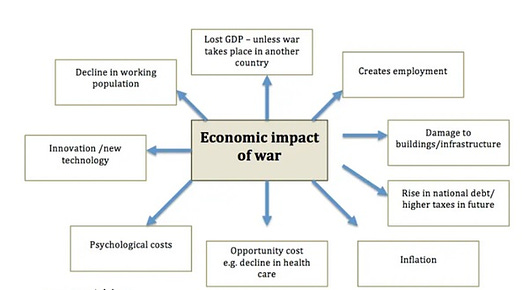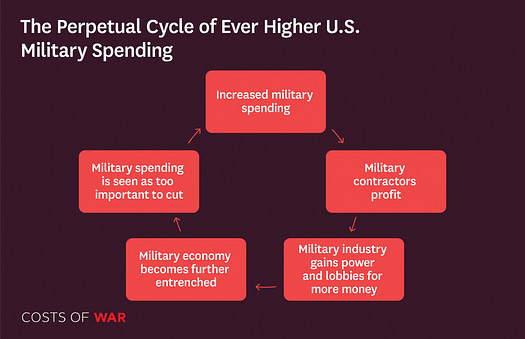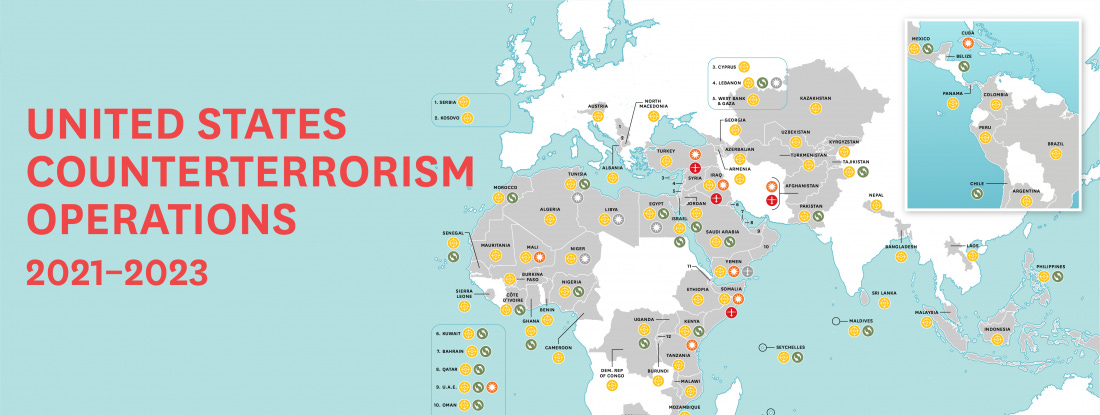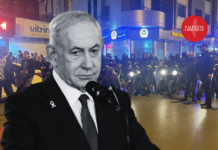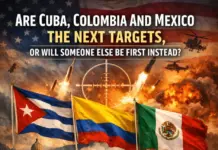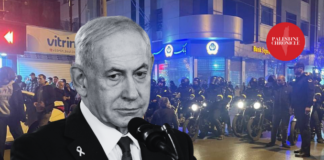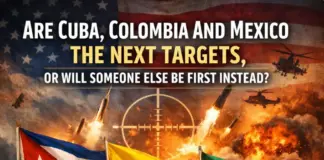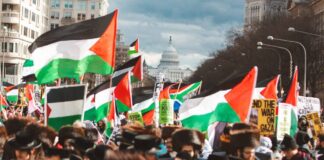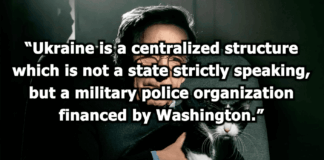Article by Elaine Buxton
Theoretical Concepts and Economic Motivations for Violent Conflict
Part 2 of this theoretical exploration into the economic causes of war concentrates on four key subtopics: competition for limited resources, war profiteering, economic and social inequalities, and Marxism. I have added an introductory section about the economic impact on war torn countries.
I have summarized some of the theoretical economic concepts that motivate armed conflicts. Every war has multiple conditions that result in violent rather than peaceful agreements and cooperation. It is a huge topic and hopefully the selected factors reviewed stimulates the readers’ thoughts and beliefs about why humans engage in so much state-run violence and what we can do to stop it.
I recommend reading Part 1 first, if you have not done so, which reviews human nature leading to violent conflict, the Male Warrior Hypothesis, and the Just War Theory, link here. There are of course many interrelated factors in the motivation and capacity to instigate or defend state violence, considering the enormous destructive consequences and different types of warfare.
Economic Consequences of War on Countries
Besides the expected military mortality and morbidity of combatants, war has enormous, tragic impacts on civilian lives, infrastructure and human rights. War destroys families, communities, and sometimes entire nations. It kills and disables more people than diseases do. It damages the environment, safe food and water, power systems, transportation systems, communications, health care, and agriculture. It uproots and displaces masses of people. It violates human rights and fair elections. It siphons off resources used for humanitarian services. Exploitation of people, drug trafficking and illegal sale of resources are used to finance wars. Spread of diseases is common. Often the people most negatively affected are the poor and the indigenous.
Given the human and physical assets lost in a war fought on its own territory, significant GDP per capita drops during the fighting and for at least a year or more after the war ends. Civil wars, which tend to last longer and leave unresolved problems, have even more persistent effects than interstate wars. Specific economic losses include disruption of normal production activity, damage to infrastructure, a decline in the working population, supply shortages, inflation, and a rise in debt. Many of the country’s resources and industries are redirected for military uses and financing. Governments tend to print money to pay for soldiers’ salaries and purchase supplies, triggering inflation. International trade, shipping and transportation may be disrupted. The price of oil, in high use by the military, usually rises. Sanctions against major oil and gas producers or other commodities lowers available supplies and raises the prices of goods.
From another perspective, certain weapon, artillery and ammunition producing corporations in the Military-Industrial Complex (MIC) will benefit with increased employment, innovation from battlefield testing, and profit. Whether making bombs is seen as a huge cost or as a huge benefit of increased demand and production, it’s crucial to appreciate the human costs of reduced spending on public services such as health care and education. Inflation leads to a loss of people’s savings and a drop in standard of living, particularly for the middle class.
During war, most countries experience a rapid rise in public sector debt from increased borrowing. Modern warfare is very expensive to run with all the new technology, costs of fuel, munitions and food. Trade disruptions can be very painful on a country’s sources of wealth. Costs continue to rise during post-war reconstruction and support for injured veterans as well. The US did not bear high costs of WW II, the Korean War, the Vietnam War or the Gulf Wars as much as others countries because it was not fought on American territory and a boost in manufacturing provided jobs and income. However, recently the US has outsourced much of its manufacturing and therefore is experiencing more negative economic effects from the war in Ukraine, which it is financing. In contrast, Russia greatly increased its manufacturing of war materials and increased its oil prices, thereby actually experiencing a rising GDP in spite of sanctions. The sanctions actually helped Russia, which diverted its investments to internal production.
Armed conflict often devastates the entire post-war economy of the losing side, besides greatly altering the economy of the winning side that chose to dedicate a large amount of its resources to the fighting and war materials. Wars collapse economic investments in the private sector, infrastructure and tourism. The increased availability of weapons can lead to increases in organized crime rates. Unemployment of returning soldiers is common. Civilians and businesses demand reparation payments. The psychological costs include pain of death, suffering, fear, disability and PTSD, leaving soldiers, adult civilians and children alike traumatized for the rest of their lives. Funding for all these problems plus reconstruction will be needed.
Military spending has become a never-ending cycle in the US and continues to divert hundreds of billions of dollars invested in military assets such as ships and aircraft that would have led to larger capital improvements had these dollars instead been invested in core public economic infrastructure, such as roads and water systems. The wars have also impacted interest rates charged to borrowers by banks and other creditors. This is the result of war spending financed entirely by debt, which has contributed to a higher ratio of national debt to Gross Domestic Product (GDP) and subsequent rising long-term interest rates. (Watson Institute for International and Public Affairs)
On a global scale, war also greatly compounds a number of preexisting adverse economic trends, including rising inflation, extreme poverty, increasing food insecurity, and worsening environmental degradation. According to the World Bank, the number of people living in extreme poverty has risen to nearly 700 million with a significant share of them living in conflict regions. Fuel and food shortages caused by the Ukraine war are exacerbating post-pandemic inflation prices that had already reached multi-decade highs in most of the world.
Resource Wars
Resource Wars is a term referring to violent conflicts that are largely driven by competition for control over territory or vital and valuable natural materials, such as oil, water, timber, gold, gems, key minerals, or animals and fish. Drive for control over resources is a dominant theme leading to war, although other factors are usually in play as well, such as historical or ethnic grievances. These wars can occur between nations and empires, or as civil conflicts between rival states, political factions, or warlords.
Russia is the only country large enough and with enough natural resources that it does not have to import raw materials for energy, manufacturing and food production. In contrast, Europe must import raw materials and fuel to power its large manufacturing exports for business. Free trade agreements are an important type of cooperation between countries. However, the temptation by countries or rival groups to forcibly take territory or control resource extraction and revenue remains prevalent. Piracy has never been completely stopped. Colonies that exploit indigenous people is ongoing in Africa, although six countries have now revolted with coups to take back control of their resources in the past year.
The term conflict resources refers to either ways of financing a war or a motive for armed conflict. Systemic exploitation and trade of natural resources can contribute to the commission of serious violations of human rights and international law. In the 1990’s, the Western African nations of Angola, Liberia and Sierra Leone financed their bloody fight through the sale of “blood diamonds”. Northeastern Congo used a slave army to mind gold and Coltan used in cell phones. Warlords in Southern Africa, South America and Southeastern Asia typically force boys and young men into militias, paying them with drugs and female slaves sex slaves kidnapped from nearby villages.
Many of the wars in the twentieth century had important resource dimensions. Examples:
· Algerian War of Independence (1954-1962): France fought over Algeria’s rich oil deposits
· Six Day War (1967): Israel and Arab states fought over water resources of the Jordan River
· Chaco War (1932-1935): Paraguay against Bolivia fought over annexation of the Gran Chaco area that was incorrectly thought to contain large oil deposits
· Persian Gulf War/Operation Desert Shield & Desert Storm (1990-1991): US coalition response to Iraq’s invasion of Kuwait over Rumaila oil field dispute. Carter Doctrine used to justify war. More than 600 oil wells in Kuwait were set on fire and burned for weeks, causing health problems and environmental damage.
Petroleum is centrally important to modern armies. The United States supplied most of the oil for the Allied armies during WW II. Oil is still a strategic resource and a matter of “national security.” The US Department of Defense is the world’s single largest user of oil and gas and is willing to go to war to secure and maintain access to overseas supplies.
The Carter Doctrine was a policy proclaimed by President Jimmy Carter in his State of the Union Address on January 23, 1980, which stated that the United States would use military force, if necessary, to defend its national interests in the Persian Gulf. After stating that Soviet troops in Afghanistan posed “a grave threat to the free movement of Middle East oil,” Carter proclaimed in his speech:
The region which is now threatened by Soviet troops in Afghanistan is of great strategic importance: It contains more than two-thirds of the world’s exportable oil. The Soviet effort to dominate Afghanistan has brought Soviet military forces to within 300 miles of the Indian Ocean and close to the Straits of Hormuz, a waterway through which most of the world’s oil must flow. The Soviet Union is now attempting to consolidate a strategic position, therefore, that poses a grave threat to the free movement of Middle East oil.
This situation demands careful thought, steady nerves, and resolute action, not only for this year but for many years to come. It demands collective efforts to meet this new threat to security in the Persian Gulf and in Southwest Asia. It demands the participation of all those who rely on oil from the Middle East and who are concerned with global peace and stability. And it demands consultation and close cooperation with countries in the area which might be threatened.
Meeting this challenge will take national will, diplomatic and political wisdom, economic sacrifice, and, of course, military capability. We must call on the best that is in us to preserve the security of this crucial region.
Let our position be absolutely clear: An attempt by any outside force to gain control of the Persian Gulf region will be regarded as an assault on the vital interests of the United States of America, and such an assault will be repelled by any means necessary, including military force. Carter Doctrine
Small countries that are resource-rich with only one commodity that they are dependent upon for export revenues are at risk for a phenomenon known as the resource curse. Referred to as Banana Republics, they tend to be ruled by dictators or oligarchs. They also tend to ignore other economic sectors and can easily become unstable by falling prices that in turn can lead to socio-economic discontent of large parts of their population and vulnerability to attack. When the advantages of resource wealth are concentrated in the hands of a small elite, resentment can build up among the rest of the population. Government officials and bureaucrats become rich through corruption. Ethnic and social groups who do not benefit from the resources are breeding grounds for internal conflicts.
Resource extractions for oil, minerals, gold, uranium, lithium and gems often occurs in remote locations populated by poor and indigenous people, including deserts, tropical forests, steep mountainsides, and polar regions. The governments allow unsafe mining practices and chemical spills polluting water and soil that would not be tolerated in more visible locations. Entire landscapes are changed. It threatens the livelihood of local people or displaces them altogether who are rarely compensated.
War economies based on the sale of natural resources for financing have political and social motivations to keep the war going long term. Control over mining is so profitable that the conflict becomes an end in itself. It not only pays for the armies, weapons and ammunition, but enriches the powerful who instigated the fighting. The US has an important foothold in the Middle East in its relations with Israel and Saudi Arabia. At the time of this writing, it has begun bombing the small county of Yemen in order to reopen Red Sea and Suez Canal transit of oil cargo ships to Israel.
War Profiteering by the Military-Industrial-Complex
A war profiteer is any person or organization that derives unreasonable profit from warfare or by selling weapons and other goods to parties at war. The United States is the world’s largest weapons manufacturer and exporter, followed by Russia, France, Germany, China and the United Kingdom. Many observers believe that American major modern defense conglomerates like Lockheed Martin, Boeing, General Dynamics, Northrup Grumman, and Raytheon fit this description as part of the MIC. UK-based BAE Systems does much of its business in the US. Oil and gas corporations also report sharp rises in revenue during war. Political figures taking bribes and favors from corporations involved with war production should be included too; US Congressmen become very wealthy soon after election.
The size of the above corporations is shocking and have larger budgets than most countries spend on defense. The current UK budget for all military spending – equipment, pay, research and the rest – stands at $68.5bn, but this is very nearly matched by Lockheed Martin. Apart from the United States, with its massive $877bn budget, and China with $292bn, all the other states worldwide, including Russia, have budgets at or below the output of the largest corporations. The top six corporations have annual revenue of nearly $300 billion. Three Chinese corporations joined the 2023 top ten global list: Aviation Corporation, China North Industries, and China South. reference here.
In 2022, the National Defense Authorization Act allocated $816.7 billion to the US DOD, with $389.5bn of it spent on military contracts for weapons and military services. Lockheed has reported that any changes in the US Federal government priorities, delays or reductions in spending have “adverse effects on their business.”
Because of the revolving doors of senior officials moving between government cabinet level appointments, military, civil service, influential think tanks, universities and corporate positions, taking with them classified information, these corporations are considered an integrated complex. They have tremendous lobbying power and money to bribe corrupt politicians. Profits are highest during active wars.
The current weapon support of Israel in Gaza is an additional multibillion dollar treasure chest for military contractors. Similarly to the Gaza humanitarian crisis, the US was heavily criticized for providing weapons to Saudi Arabia for the war between Saudi and the Houthi militia in Yemen beginning in 2015 that created one of the worst humanitarian crisis of 21 million Yemenis in need of food and assistance. The US has supplied white phosphorus for use against Gaza, which is prohibited under international law. In 2022, The US provided Israel with $3.3bn in foreign assistance; 99% of that went directly to the Israeli Defense Forces under the label of “peace and security.”
It’s not just Palestine and Yemen that have been violently attacked by the American government and corporations. It includes Afghanistan, Iraq, Syria, Ukraine, and many others.
The Cost of War Project was created in 2010 at Brown University’s Watson Institute for International and Public Affairs. The project conducts and publishes research to facilitate debate about the ongoing consequences of the United States post-9/11 wars in Afghanistan, Iraq and elsewhere; the costs of the U.S. global military footprint; and the domestic effects of U.S. military spending. It builds on the work of over 60 scholars, experts, human rights advocates, and physicians from around the world. Watson.Brown link
Between 2021 and 2023, the U.S. government conducted counterterrorism operations in 78 countries. These operations include ground combat in at least nine countries and air strikes in at least four countries during the first three years of the Biden Administration. Though the total number of countries with U.S. counterterrorism operations has decreased slightly from 2018-2020 – from 85 countries – the counterterrorism footprint remains remarkably similar to what it was under the Trump Administration.
Many U.S. military operations are not included in the report – notably, those aimed at what U.S. officials and media identify as the military threat posed by Russia and China, the focus of much current U.S. foreign policy; military bases that have housed counterterrorism operations; arms sales to foreign governments; and all deployments of U.S. special operations forces and Central Intelligence Agency operations. Further, the map does not display “military information support operations,” or “psychological operations,” which the U.S. military carries out in many countries on the map and beyond, such as in Iran. All of these are significant elements of the bigger picture of U.S. counterterrorism strategy but beyond the scope of the current data set.
The map illustrates that the war launched by the United States government in response to the 9/11 terror attacks continues.
The corporations have more ways of profiteering beyond weapons sales. The weapons industry, the DOD and the US Congress who allocate defense budgets and receive campaign money form an interdependent iron triangle. Public funding is provided for corporate research and development but any profit remains with the corporations and elite administrators, not the taxpayers. Typically when weapons are sent to a war zone with known corrupted governments, a portion of the weapons are sold on the black market from the corrupt country. For example, weapons sent to Ukraine are now showing up in the Middle East battlefields. War funds disappear and go unaccounted for. In Afghanistan, 2 trillion dollars were spent with no significant development and in 2018, $15 million was reported missing or wasted. The missing funds end up back in the pockets of the elite administrators or bankers, probably related to the significant increase in poppy field growth during that time. The US outsourced much of the fighting in Afghanistan and Ukraine to private contractors, which is a way of investing again in American corporations and money laundering.
Economic Inequalities and Armed Conflict
There has been considerable research on the links between inequalities and conflict. Originating with the work of economist Frances Stewart in 2000, there is a distinction and different findings between vertical inequality(between individuals and households) and horizontal inequality (between groups). Conventional beliefs hold that inequality triggers conflicts and violence, but studies over the past 20 years or so show that vertical inequality is NOT associated with armed conflict, whereas consensus has been reached on the correlations with armed conflict between groups, or horizontal inequality.
Prominent authors within the horizontal inequality literature have focused on how inequality is experienced and perceived. While linked and overlapping to some degree, subjective, perceived inequality has different behavioral outcomes compared to objective, measurable inequality. What really matters the most and motivates collective action is how people perceive their group’s situation compared to other groups. And the question of whether inequality in the world has increased or decreased depends upon how it is defined and measured.
Both de Tocqueville and Marx argued that inequality between the “haves” and the “have-nots” has historically been the root cause of revolutions and class struggle. In the words of de Tocqueville: Remove the secondary causes that have produced the great convulsions of the world and you will almost always find the principle of inequality at the bottom. Either the poor have attempted to plunder the rich, or the rich to enslave the poor”. In spite of a great deal of academic attention on whether, why, and how vertical inequality impacts conflict, it failed to explain collective action for mobilizing violence. Beginning in the early 2000s, researchers examined how group identities, such as ethnicity and religion, and inequalities, such as political and economic deprivation, make violent conflict more likely. link here
Relative deprivation theorists (Ted Gurr, 1970) argued that when there are very high levels of perceived discrepancy of a large group of people who believe that what they are rightfully entitled to maintain or acquire in the future between what they are actually capable of acquiring or maintaining is likely to generate group-level, shared frustration, anger and discontent. The emotional frustration about the discrepancy can heighten aggression and violent political conflict when the source of frustration is identified as the political system of the state. Perceptions and beliefs are key causal mechanisms in the link between collective well-being and violence. It is not absolute deprivation that generates conflict, but how people believe that their group is faring in society.
In order for perceived inequalities to become motivated grievances for collective action there must be four conditions met:
1. Strong group identity – A set of well-defined and identifiably separate groups in society
2. Comparative information – Groups must have a way to compare themselves other groups
3. Framing and blaming of the problem – Groups must be able to use information about inter-group inequalities to evaluate and frame it as unfair, assign blame, and politicize the inequality.
4. Organization for collective action – There must be an existing political structure that can carry out any violent group actions and be financially viable.
Influential academic economists have identified greed and grievances as important phenomena explaining conflicts between groups. Greed refers to economic motivations to control natural resources and the opportunity to finance an armed conflict and recruit fighting manpower. The objective is to capture a rival group’s resources by force with the calculation that the cost-benefit ratio of violence is worth more than peaceful trade and cooperation. Poverty may prevent rebels from engaging in conflict or poor states from stopping rebellion.
Greed involves having internal and external opportunities to wage war. Internal opportunities are the capabilities of a group to mobilize members using group identity, member networks, and common grievances. External opportunities include structural, political, and economic conditions available.
Grievance refers to justice seeking based on ethnic, religious, and/or political repression. Perceived, feelings of economic deprivation, discrimination and authoritarian rule fuels conflict. These grievances serve to strengthen group identities and group formation, whether based on race, language, religion, tribal affiliation or regional differences. Inequalities are economic, political, or social dimensions of the culturally defined groups.
A combination of greed and grievances is necessary for organized violent conflict, either to preserve a group’s power and resources in the case of being relatively well-off, or to forcibly take another group’s resources by the relatively deprived. Group identity serves as the glue that ensures group cohesion and opportunity for collective action. Group grievances inspire members to compare the status of their group to that of others. The greater the discrepancy between what people think they deserve and what they believe they can actually get (aspirations vs achievements), the greater the motivation to fight for redistribution. This relative deprivation is considered to be a major determinant of war.
In the modern world, most individuals belong to multiple social groups that may overlap. According to the horizontal inequality theory, certain group identities are stronger than that of socioeconomic class identity needed to form collective conflict. These identities vary according to context of a conflict, but tend to include language, religion, migrant status, gender or regional identity. Identities are dynamic, so group leaders and conflict entrepreneurs interpret and frame reality in a manner that facilitates mobilization of fighters and financial donors. Assigning blame to some external actor has been shown to arouse feelings of solidarity, anger and resentment.
Examples of Economic Inequalities and Grievances Enforced by States
· Discrimination and Unfair Public Spending and Taxation: Over taxation of low income and indigenous groups, discrimination in access to public education, healthcare, employment
· High Asset Inequality: Resources such as land, minerals, water, oil, gems not equally distributed
· Economic Mismanagement and Recession: High income inequities, public spending that favors elites, corporations and military; government corruption, failure to support disadvantaged groups
· Grievances Related to Resource Rents: Local populations not getting fair share of natural resources and revenues controlled by elites
While greed and grievances in some hybrid-form are usually necessary for the outbreak of war, arguably they may not be sufficient. A failed social contract by the associated state is another important factor. This is similar to a weak state capacity, poor economic development or the grievances listed above. If a country has a framework of widely-agreed rules that govern the sharing of resources, there can be peaceful settlement of grievances, thus preventing violent rebellion.
War implies the breakdown or absence of contractual agreements. In the modern world, we expect some degree of cooperation and social contracts between groups and nations. Social contracts can be vertical and authoritarian in the philosophy of Thomas Hobbes or horizontal and democratic if based on popular consent as advocated by philosopher John Locke. Good governance holds social contracts together. Good governance would include resource revenue sharing with various stakeholders, separation of political powers, and economic development that promotes high standards of living for the population.
Marxism
Karl Marx viewed class struggle and economic relations as the driving force of political order. The Communist Manifesto portrays economic class as the most salient group identity that naturally gives rise in the Industrial Era to violent and large-scale collective actions taken by proletariats against oppressive exploitation by bourgeoisie. Ultimate redistribution of wealth prevents further conflict.
Marx noted social tension in terms of how individuals compare themselves to others with the rise of wages in the early phases of industrialization: “Although the enjoyments of the workers have risen, the social satisfaction that they give has fallen in comparison with the increased enjoyments of the capitalist, which are inaccessible to the worker, in comparison with the state of development of society in general. Our desires and pleasures spring from society; we measure them, therefore, by society and not by objects which serve for their satisfaction. Because they are of a social nature, they are of a relative nature.” quote link
Marx argued that a collective sense of dissatisfaction with the prevailing distribution of material goods and a perceived mismatch in rising wealth compared to living standards were root causes of rebellion against the state. Again, the perception of deprivation is more important than absolute deprivation. (Ted Gurr, 1970)
Conclusion
There is always a rational choice between non-cooperative, destructive behavior and more peaceful means, although circumstances such as poverty, mistrust, institutional failure, impatience, hatred, greed, or myopia (stupidity and poor calculations) may rule out cooperation in the eyes of the perpetrators.
Disclaimer: We at Prepare for Change (PFC) bring you information that is not offered by the mainstream news, and therefore may seem controversial. The opinions, views, statements, and/or information we present are not necessarily promoted, endorsed, espoused, or agreed to by Prepare for Change, its leadership Council, members, those who work with PFC, or those who read its content. However, they are hopefully provocative. Please use discernment! Use logical thinking, your own intuition and your own connection with Source, Spirit and Natural Laws to help you determine what is true and what is not. By sharing information and seeding dialogue, it is our goal to raise consciousness and awareness of higher truths to free us from enslavement of the matrix in this material realm.
 EN
EN FR
FR


